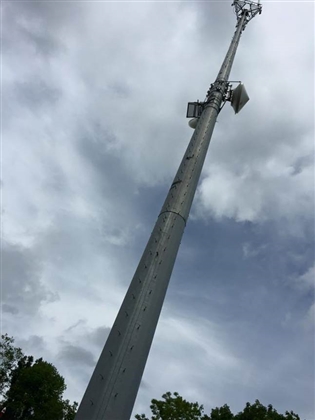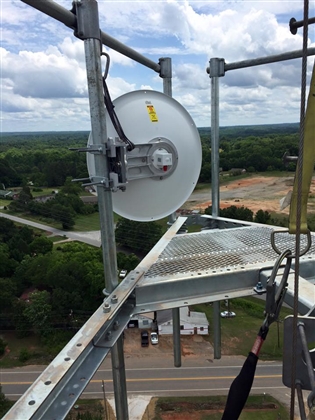Answer

Jun 22, 2015 - 01:52 PM
Microwave dishes come in many sizes and several frequencies, but they all have similarities. They are a point-to-point communication system. Whereas an average macro-cell tower has sectors of antennas that area aimed towards the ground to cover any wireless customer who is in that blanket of coverage, microwave dish links can span a very great distance by sending data from dish to dish to dish in small distances until the information reaches its final destination.

Cellular carriers use small dishes like the ones in the pictures below to help resolve the capacity issues at certain sites. The term backhaul, generally, is used to refer to how cellular carriers can more efficiently move data through their network to and from your wireless device. Many wireless carriers are using these dishes to "talk" to other towers. Carriers may have 2 sites a few miles apart and one site has fiber optics and the other site is not fiber capable yet. As most of you know just because Verizon offered FIOS service, doesn't mean FIOS was available in your geographic region. Cell sites are limited as well, by what telco and fiber utilities are available in a geographic region. By setting up small links, or hops, of microwave dishes, carriers can link a non-fiber (slow) tower with a fiber enabled (fast) tower and relieve the burden of wireless data demands on the slow tower. Similarly, if 2 sites are within a few miles and are both fiber capable, but one site is closer to a road than the other site, the site close to the road may see a particularly heavy burden of users during rush hour. A microwave dish at that burdened site can relieve some of the capacity burden that occurs when people, stuck in their cars, in one location, continue to stream data to their phones and since traffic isn't moving, their demands all come from the tower closest to them and their call or wireless device isn't handed off to the next cell tower.


Cellular carriers use small dishes like the ones in the pictures below to help resolve the capacity issues at certain sites. The term backhaul, generally, is used to refer to how cellular carriers can more efficiently move data through their network to and from your wireless device. Many wireless carriers are using these dishes to "talk" to other towers. Carriers may have 2 sites a few miles apart and one site has fiber optics and the other site is not fiber capable yet. As most of you know just because Verizon offered FIOS service, doesn't mean FIOS was available in your geographic region. Cell sites are limited as well, by what telco and fiber utilities are available in a geographic region. By setting up small links, or hops, of microwave dishes, carriers can link a non-fiber (slow) tower with a fiber enabled (fast) tower and relieve the burden of wireless data demands on the slow tower. Similarly, if 2 sites are within a few miles and are both fiber capable, but one site is closer to a road than the other site, the site close to the road may see a particularly heavy burden of users during rush hour. A microwave dish at that burdened site can relieve some of the capacity burden that occurs when people, stuck in their cars, in one location, continue to stream data to their phones and since traffic isn't moving, their demands all come from the tower closest to them and their call or wireless device isn't handed off to the next cell tower.






Add New Comment